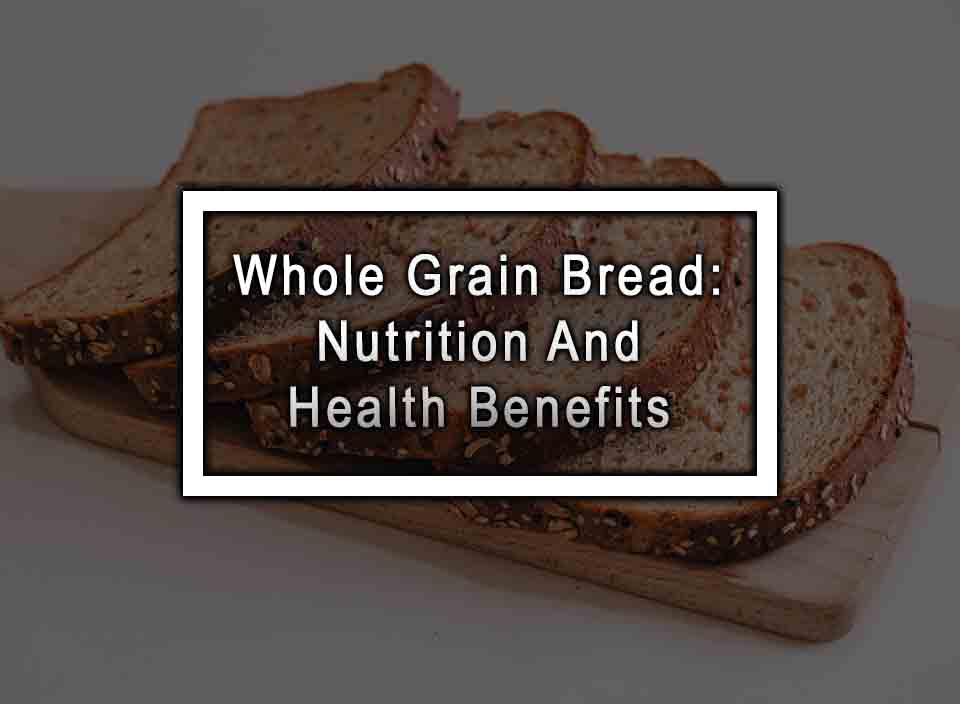Get Ready to Rise to the Occasion: The Whole Grain Bread Breakdown!
Whole Grain Bread: When it comes to a healthy diet, whole grains are an essential part of it. They are rich in vitamins, minerals, fiber, and many other nutrients our body needs. Whole-grain bread is one of the most popular sources of whole grains in our diets. Compared to refined white bread, whole-grain bread is a much better option for our health. In this article, we will discuss the nutritional value and health benefits of whole-grain bread.
What is Whole Grain Bread?
Whole grain bread is made from flour, which is produced by grinding whole grains. Whole grains include the bran, germ, and endosperm of the grain. Refined or white bread, on the other hand, is made from flour that is stripped of the bran and germ, which also removes many of the nutrients. Whole-grain bread is a healthier option because it retains all the nutrients that the grain naturally possesses.
Nutritional Value
Whole grain bread is packed with nutrients that our body needs to function well. It is a great source of fiber, vitamins, and minerals. One slice of whole-grain bread (28 grams) contains:
- Carbohydrates: 12 grams
- Fiber: 2 grams
- Protein: 3 grams
- Fat: 1 gram
- Vitamin E: 2% of the RDI (Recommended Daily Intake)
- Vitamin B1 (Thiamine): 7% of the RDI
- Vitamin B6: 3% of the RDI
- Folate: 3% of the RDI
- Iron: 4% of the RDI
- Magnesium: 5% of the RDI
- Phosphorus: 6% of the RDI
- Potassium: 2% of the RDI
- Zinc: 3% of the RDI
- Copper: 4% of the RDI
- Manganese: 15% of the RDI
- Selenium: 10% of the RDI
Health Benefits
Good for Heart Health
Whole grain bread is a great addition to a heart-healthy diet. It is rich in fiber, which can reduce the risk of heart disease. The fiber in whole grains helps to lower cholesterol levels, which is good for the heart.
May Reduce the Risk of Type 2 Diabetes
Whole grain bread has a low glycemic index, which means it does not cause a rapid spike in blood sugar levels. This may help reduce the risk of type 2 diabetes. It can also help manage blood sugar levels for people with diabetes.
Good for Digestive Health
Whole grain bread is rich in fiber, which is beneficial for digestive health. Fiber helps to promote regular bowel movements and prevent constipation. It also helps to feed the good bacteria in our gut, which is important for overall gut health.
May Help with Weight Management
Because whole grain bread is rich in fiber, it can help you feel full for longer. This may help with weight management because you may be less likely to overeat.
May Lower the Risk of Cancer
Whole grain bread is rich in antioxidants, which can help reduce the risk of cancer. The fiber in whole grains can also help reduce the risk of colorectal cancer.
Seize the Yeast: Whole Grain Bread for a Wholesome Life!
Now that we’ve journeyed through the wholesome world of whole-grain bread, it’s easy to see why this fiber-filled feast deserves a prime spot on your plate. From safeguarding your heart to managing your middle, the benefits are as varied as the grains themselves. So the next time you’re navigating the bread aisle, remember that whole grain is the grain of life’s main mane. Toast to your health, butter up some benefits, and break bread with the best. Whole-grain bread isn’t just a meal component; it’s a health revolution wrapped up in a delicious, crusty package. Embrace the grain, and your body, mind, and taste buds will surely thank you!
Whole Grain Bread FAQ
Here are the most common questions about whole-grain bread.
1. Is all whole-grain bread the same?
No, there are different types of whole-grain bread, including bread made with different grains (such as whole wheat, rye, or oats). Some breads may also contain other ingredients, such as seeds, nuts, or dried fruit.
2. Is whole-grain bread gluten-free?
No, whole-grain bread typically contains gluten, which is a protein found in wheat, rye, and barley. If you have celiac disease or gluten sensitivity, you should look for gluten-free bread options instead.
3. Is whole-grain bread low in carbohydrates?
No, whole grain bread is not low in carbohydrates, as it is made with flour that contains carbohydrates. However, it is typically higher in fiber than other types of bread, which can help to balance blood sugar levels.
4. Can I make my own whole-grain bread at home?
Yes, you can make your own whole-grain bread at home using whole-grain flour, water, yeast, and other ingredients. There are many recipes available online or in baking cookbooks.
5. How should I store whole-grain bread?
Whole-grain bread should be stored in a cool, dry place to prevent it from getting moldy or stale. You can also freeze it for longer storage.












